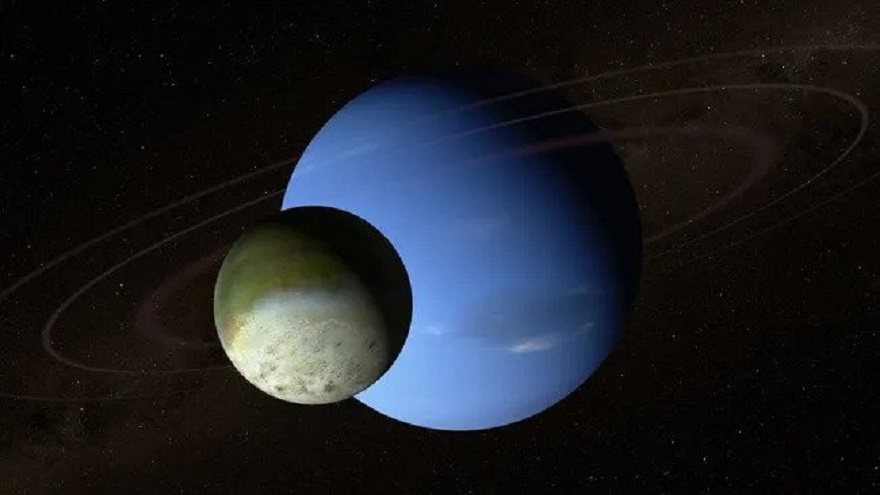It is extremely difficult to launch a spacecraft into Neptune’s orbit because of the remoteness of this planet and the significant fuel costs that are needed for this. Scientists have proposed using aerodynamic braking for this.

Why is Neptune hard to get to
Scientists have proposed a new scheme that allows putting a spacecraft into Neptune’s orbit. The eighth planet from the Sun remains almost unexplored up close. The only spacecraft that managed to see it up close was Voyager 2. But at the end of the 1980s, it just flew by and did not linger.
New Horizons was able to photograph Neptune and its largest moon, Triton, in 2014. But it did it from a distance of 3.96 million kilometers. And all because getting to this planet is much more difficult than you can imagine. It’s just in the diagrams that it is only three orbits further than Jupiter. In fact, the distance to Neptune from the Sun is five times greater than the distance to the largest planet in the Solar System and 30 times greater than the distance to the Earth.
In order for the journey to take a reasonable amount of time, it is necessary to accelerate. And this requires a huge amount of fuel. In 1989, Voyager 2 managed to reach Neptune solely due to the successful location of the planets, which allowed it to use a gravitational maneuver to accelerate.
But that’s not all. For qualitative research, the spacecraft should not just fly past Neptune but enter its orbit. And for this, there should be enough fuel on board for braking maneuvers. And it’s not even enough for acceleration.
Neptune’s moon as a brake
In order to cope with this problem, scientists suggest using the same moon Triton. It was filmed by the New Horizons apparatus. This is a fairly large body. In fact, it has a diameter of 4,000 km, which is more than the Earth’s moon.
Triton has ice geysers and an atmosphere. Its pressure is 70 thousand times less than that of the earth, but this may be enough. And scientists suggest using it. We are talking about aerodynamic braking, which is used to reduce the spacecraft from Earth’s orbit. It is worth it for the probe to fly into a gaseous medium, and the molecules in it will begin to slow it down.
And experts suggest using the atmosphere of Triton in order to put the spacecraft into Neptune’s orbit. However, it will have to fly at a distance of 10 km from its surface to do this. This is about the same height above the surface at which passenger planes fly on Earth. The probe will not fall on the surface of Triton, but it will slow down enough for its speed to become less than the second cosmic for Neptune.
Triton Research
The only thing that can prevent it is the mountain. However, scientists have already found out that the hills on Triton do not exceed one kilometer. In addition, last year, NASA tested LOFTID — an inflatable brake that should protect the spacecraft when entering the Earth’s atmosphere.
It can also be used for braking in the atmosphere of Titan. Scientists note that if the implementation is successful, people will have the opportunity to explore Triton as a bonus. There are suspicions that it is an object in the Kuiper Belt. It was once captured by the gravitational force of Neptune and turned into its moon.
According to www.space.com
Follow us on Twitter to get the most interesting space news in time
https://twitter.com/ust_magazine
